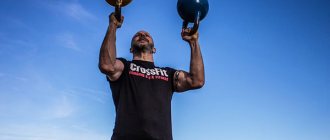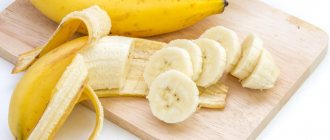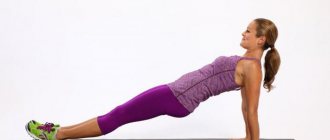Cardio training
This is the most popular type, especially for those who want to lose weight. It is cardio - training that acts as a direct fat burner - to get a positive result you will have to sweat a lot and not skip sports activities. These are the basic rules for every novice athlete.
The amount of calories burned is largely determined by the duration/intensity of the workout. But on average, an hour and a half of intense sports activity burns about 800 calories. When training at a moderate pace, the indicators are about 500 calories.
But it is worth noting that much depends on the level of training of the trainee himself, his endurance. This is because calories are burned from the 20th minute of sports activity, when an athlete on a treadmill, cycling track, or jumping rope runs out of energy already at the 5th minute - there will be no benefit.
“I couldn’t lose weight doing CrossFit until I started focusing on 4 things.”
When I started my CrossFit journey, I knew what I wanted. Just become thin and fit. And six months later I will share amazing photos of my transformation with everyone.
By the eighth month I had definitely gained weight, and it wasn't just the muscles - I looked and felt plumper. My sports bras and jeans were tighter. And I just didn’t feel like myself. I made a few mistakes my first year of CrossFit. And this intense exercise routine didn't help me get lean—until I started doing these four things. Keep reading to find out which ones.
First moment
I started monitoring my diet and micronutrient intake.
Intense, hours-long CrossFit workouts made me incredibly hungry. But I decided that since I was working out, I might as well eat a little more. I found myself reaching for large handfuls of nuts, fruits, and extra portions of dinner all day long. Even though I was eating healthy, weight loss health coach Rachel McPherson agreed—I was just eating too much.
Crossfit
It's a combination of strength training and cardio that burns a lot of calories. According to experienced trainers, an athlete can spend from 500 to 1500 calories per training cycle. Much is determined by the duration and intensity of the selected programs.
Important. As experienced trainers say, kilograms are burned as part of this workout even after the completion of the lesson itself. CrossFit is called the most effective fat burner.
What kind of workouts are done during CrossFit?
CrossFit is a truly unique system. The meaning of this training method is to develop, using a specially selected set of exercises, simultaneously several muscle groups that are responsible for certain characteristics (endurance, flexibility, etc.), and to strengthen the heart, blood vessels and respiratory organs. As a result, it is possible to harden the body, lose weight and give muscles relief.
The essence of the training consists of very intense exercises performed in a circular manner for a minimum period of time. For this reason, a session lasting only thirty minutes gives a noticeable effect after just three weeks. In addition, the program of such training is constantly improving, new options are appearing, thanks to which improved performance is achieved.
CrossFit includes individual elements of various sports disciplines. In particular, the structure of training using this method includes:
- Exercises typical of gymnastics;
- Aerobics sets;
- Exercises using dumbbells or barbells;
- Bodybuilding elements.
Thanks to this combination of different areas, CrossFit is a unique and effective method for developing physical characteristics and losing weight.
Be sure to read: What are the benefits of running in the morning?
Interval training
They, according to many trainers, are distinguished by high rates of effectiveness in the fight against extra pounds. One training cycle can burn from 400 to 90 calories, while excess deposits are burned even during the recovery period.
Worth remembering. To achieve visible results, it is important to perform 3 interval exercise programs per week, lasting 15 minutes each.
Comments
- xapyk Publications: 1,327Member, MFP Moderator MFP Moderator
Publications: 1,327Member, MFP Moderator MFP Moderator
Check out my adjacent topic “how to determine how many calories are spent on strength training”
- nikonel Publications: 135Member Member
Publications: 135Member Member
I read, it doesn’t matter, it turns out something like this. I decided to count this way for now. According to the sensations and the way my body works, I get exhausted after 20-25 minutes of CrossFit, about the same as I get exhausted from running at a speed of 13-15 km/h during the same time. “According to the readings,” at this running speed, the consumption is approximately 1000 calories per hour. Therefore, I estimate that I spend somewhere around 370-450 calories for CrossFit, + for 40 minutes of running, including intervals at high speed, also about 500 calories. Total roughly about 900 calories. I just started practicing this method, I’ll see how the result will be in the coming weeks (unless I die, of course)
- xapyk Publications: 1,327Member, MFP Moderator MFP Moderator
Publications: 1,327Member, MFP Moderator MFP Moderator
Unfortunately, yes, everything is approximately. The weight of an apple can be accurately measured, but how many calories it contains, it must be burned in a special installation, but then it will not be possible to eat it. The same goes for expenses. To avoid this, you need to wear a special mask and a gas analyzer, which will take into account the amount of oxygen and carbon dioxide in the exhaled air during exercise. But we don’t have this in constant use either. Because everything is approximately. Your approach is correct. See where the weight goes over 2-4 weeks, preferably 4, and then adjust if necessary.
- wladk Posts: 1,063Member Member
Publications: 1,063Member Member
Nikonel, try using for example runtastic.com and its mobile applications IOS, Android. Or Endomondo.com The first application (Rantastic) has the CrossFit activity (it’s in Russian). Set the time, get the calories. In the second (Endomondo) in English, there is circuit training - circular training. also, you give time, you get calories. This is very approximate - I also do intense CrossFit (heart rate does not drop below 120, it reaches 160), with 10 minutes of surya namaskara yoga and light aerobics with stretching as a warm-up, 20 minutes of HIIT CrossFit, 10 minutes of static stretching at the end. All this burns about 700 kcal per hour for me. Rantastic and Endomondo show 40% less - so everything is relative. Here I trust the heart rate monitor. In general, when working with a heart rate monitor, there is one simple rule: when the heart rate is in the fat burning zone and above during any activity (for people 30-35 years old this is 130 and above) - then you need to trust the heart rate monitor. This includes any intense training - running, cycling, aerobics - at a decent pace, CrossFit, and intense circuit strength training. If the pulse is less than 120 UVM - strength training, gymnastics, yoga, stretching, etc. - you need to believe in special programs (I have listed two). MFP... it’s hard to believe in activity. Or adjust for yourself each time, sometimes the adjustment is 2 times...
Tabata
Tabata is a type of high-intensity interval training that lasts no more than 4 minutes. The duration of the lesson is 20 seconds. – this is an intensive exercise, then rest for 10 seconds, and repeat again. There are 8 cycles in the allotted 4 minutes. A completed exercise cycle burns about 200–300 calories.
To summarize, it is worth noting that such types of exercise as Tabata, cardio, CrossFit give good results in the program for burning excess calories.
But the main rule for an athlete is to consume fewer calories than he burns. This is the only way to get the desired results from the selected practical sports activities.
COMMUNITY NAME
Visual Text
A modern gym is a variety and abundance of equipment for sports, an ideal place for those who want to increase muscle tone and become the happy owner of a toned, beautiful figure.
Training in the gym is designed for people of any level of training and is absolutely safe.
The gym is divided into several zones:• Strength zone• Cardio zone• Circuit training• Elliptical exercise bikes
Before the first lesson in the gym, an “Introductory training” is held. It is conducted by the instructor on duty at the gym in order to get acquainted with the structure of classes, the location and purpose of exercise equipment, show the basic exercises and talk about the rules of conduct and safety in the gym.
How to calculate calorie consumption during training?
To better assess whether a sport suits your goals, whether you need to burn more calories or change your diet, you should think about your basal metabolic rate, overall performance, and daily energy balance. In the meantime, let's look at the most energy-intensive sports.
Average values are given for a person weighing 80 kilograms per 30 minutes of exercise.
- Fast running (12 km/h) - 600 calories. This is far from the most popular sport, but fast running is one of the best calorie killers. But their consumption largely depends on the experience and intensity of running.
- Squash - 480 calories. One court, one ball and one racket - but almost 500 calories less after half an hour. Playing squash with friends is double the pleasure.
- Boxing - 400 calories. Have you ever practiced real boxing? It seems that standing still and hitting forward is not so difficult, but these seemingly primitive actions require as much as 400 calories in half an hour!
- Swimming - 360 calories. Calorie consumption while swimming is easy to see. It's not surprising that some people exercise in the evening or very early in the morning. Swimming is especially recommended as a morning exercise - it will energize you for the whole day.
- Mountain biking - 325 calories. You just need a good bike! A significant benefit of mountain biking is being outdoors and getting vitamin D through sunlight.
- Basketball - 315 calories. Gather a group of friends, put away your smartphones and play a great team game - basketball. The more often you play, the slimmer your figures will become!
- Football - 308 calories. The same is true for football. Surely there is a free site nearby or at least a vacant lot. Just don't try to reward yourself with beer after a successful game!
- Bouldering - 290 calories. Do you want something new and unusual? Start climbing the heights! Bouldering is a great full-body workout and just a fashion trend.
- Strength training and bodybuilding - 250 calories. It is quite logical that during exercises with iron the body expends a lot of energy.
- High Interval Training - 450 calories. Although it is short, the effectiveness is very significant.
- Gymnastics - 400 calories. You don't always need iron for exercise; sometimes your own weight is enough. It can be called ideal for load and always available.
- CrossFit - 390 calories. This is a very easy way to train your entire body and burn almost 400 calories in half an hour.
- Indoor cycling - 380 calories. You move in place, but this does not mean the activity is easy. 800 calories per hour is a very significant number.
- Circuit training - 290 calories. With its help, you improve your body in several ways - strength, speed, duration and mobility.
- Jazz dance - 240 calories. Dancing to music while losing calories - what could be more enjoyable? And being in a group additionally motivates you to lose weight.
- Power yoga - 155 calories. Does gentle yoga help you lose weight? Yes, especially if it is a power sport. It also speeds up metabolism and strengthens muscles.
Source
Energy consumption and sports: what you need to know
Although we have prepared an overview of which sport burns how much energy, it may still happen that your friend will burn more calories than you, even if you perform the same activities. Calorie expenditure during exercise depends on many other factors:
- Genetics. Unfortunately, it is impossible to change it, but its role is not so significant.
- Height, weight, proportion of muscle and fat mass. The bigger and heavier you are, the more calories you burn during training and in everyday life. If there is a lot of muscle and little fat, then calorie consumption is also quite high.
- Load intensity. The more intense the workout, the higher the calorie consumption - logical.
- Duration: the longer you do, the more you spend.
- Environmental factors. These include, for example, air temperature. If the environment is hot or cold, the body spends additional energy on warming up or cooling down. If you train outside, you have to overcome the resistance of a headwind, run on uneven ground or uphill. All this increases energy costs.
Metabolism is largely determined genetically, but it is possible to speed it up.
And one more thing: when you compare yourself to someone, your motivation is destroyed. Even if you have objectively the same conditions - the same size, the same weight, even a sports course - you will still act independently and perform individual exercises in your own way. So focus only on your result and don’t look at others.











